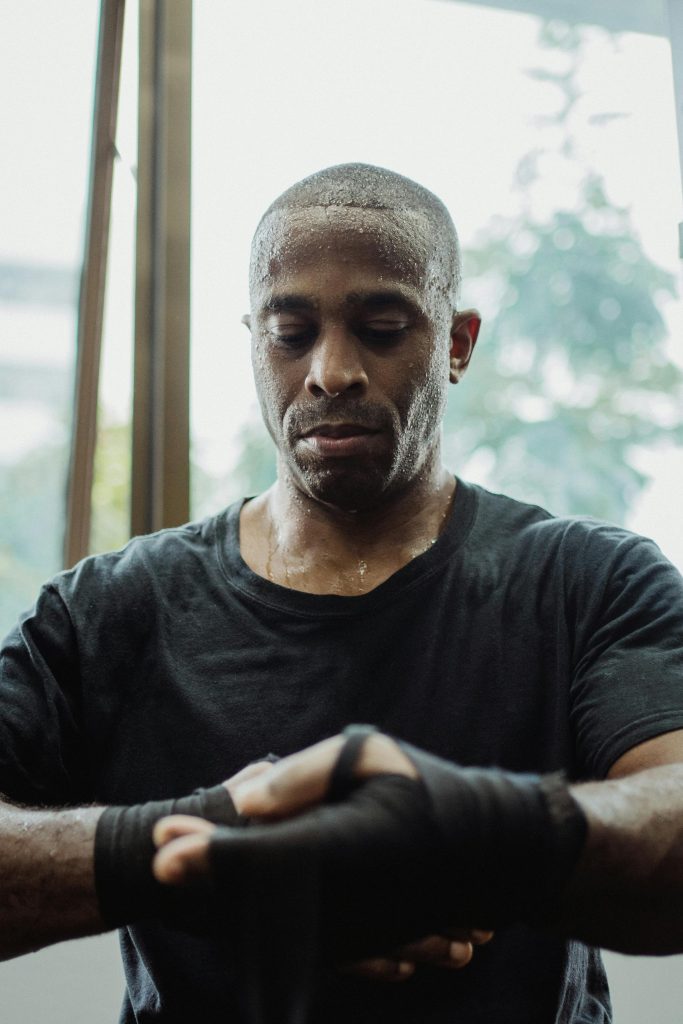You know the feeling. That electric buzz of a new beginning. You’ve set a goal—to get fit, to learn a language, to launch a side hustle, to write a book. The first few days are magic. You’re bursting out of bed, fueled by pure excitement. The gym feels like an adventure, the keyboard sings under your fingers. You’re powered by a jet fuel called motivation.
But then, life happens.
Your alarm screams into a rainy Monday morning. Your couch whispers your name after a long, draining day. The initial rush of progress slows to a frustrating crawl. That exciting goal suddenly feels like a heavy chore.
And just like that, the motivation vanishes. It packs its bags without a word and leaves you stranded.
This is the moment where dreams are either abandoned or achieved. This is the precise crossroads where discipline—not motivation—takes the wheel.
If you’ve ever felt like a prisoner to your fluctuating feelings, if you’ve ever started strong only to fizzle out, this isn’t a sign that you’re lazy or flawed. It’s a sign that you’ve been relying on the wrong fuel. This article is your guide to building an engine of discipline that runs even when the tank of motivation is empty.
Part 1: Why Your Brain is Wired to Give Up (And How to Rewire It)

To understand discipline, we first have to understand its greatest enemy: our own biology.
The Lizard Brain vs. The CEO
Think of your brain as having two key players:
- The Limbic System (Your “Lizard Brain”): This is the ancient part of your brain. It’s all about survival, comfort, and immediate gratification. It loves sugar, sleep, and scrolling on your phone. It hates discomfort, effort, and anything that feels like a threat to its cozy status quo. It’s the voice that says, “One more episode won’t hurt,” or “You can start tomorrow.”
- The Prefrontal Cortex (Your “CEO Brain”): This is the evolved, logical part of your brain, right behind your forehead. It’s responsible for planning, decision-making, and long-term goals. It’s the voice that says, “If I go for a run now, I’ll feel great and be healthier in the long run.”
Every time you face a choice between a easy, pleasurable action and a difficult, meaningful one, it’s a battle between your Lizard Brain and your CEO Brain. The problem? The Lizard Brain is loud, emotional, and has a direct line to your feel-good chemicals. The CEO Brain is quieter, slower, and tires easily—a state psychologists call ego depletion.
This is why you can resist the donut at 9 AM but find yourself elbow-deep in a bag of chips at 9 PM. Your CEO Brain is tired from making decisions all day.
So, how do we win this battle? We don’t fight it head-on. We outsmart it.
Part 2: The Discipline Engine: Building Systems That Don’t Rely on Willpower

Discipline isn’t about white-knuckling your way through life using sheer grit. That’s exhausting and unsustainable. True discipline is about building systems and environments that make the right action the easiest action. You’re not trying to become a more disciplined person; you’re building a more disciplined process.
Strategy 1: Make It So Small You Can’t Say No (The Power of Atomic Habits)
This is the single most important concept for building consistency. When motivation fades, the thought of “writing a book” or “getting fit” is overwhelming. Your Lizard Brain screams in protest.
The solution? Shrink the task.
Author James Clear, in his book Atomic Habits, calls this “The Two-Minute Rule.” The goal is to master the art of showing up. Your task shouldn’t be to “run 3 miles,” it should be to “put on my running shoes.” Your task isn’t to “write a chapter,” it’s to “write one sentence.”
Why does this work?
- It tricks the Lizard Brain: Putting on your shoes feels trivial, not threatening. The resistance is low.
- It builds momentum: Once your shoes are on, you might think, “Well, I might as well step outside.” Once you’ve written one sentence, you’ll often find yourself writing a paragraph.
- It establishes the identity: Every time you put on your running shoes, you are, in that moment, a runner. You are reinforcing the identity of the person you want to become.
Your Action Step: Take your biggest goal and break it down into a “two-minute” starting version. Do this version every single day, no matter what.
Strategy 2: Design Your Environment for Success
Your willpower is a limited resource. Why waste it fighting temptations when you can simply remove them? Your environment is like the silent architect of your behavior.
- Want to eat healthier? Don’t rely on willpower to resist the cookies. Just don’t buy them. Wash and chop your vegetables as soon as you get home from the grocery store and put them at eye-level in the fridge.
- Want to waste less time on your phone? Delete the social media apps. Charge your phone in another room at night.
- Want to read more? Place a book on your pillow every morning.
You are not a slave to your environment; you are its creator. Every change you make is a vote for your future self.
Strategy 3: The Magic of Habit Stacking
Trying to remember to do a new habit is hard. The solution is to “stack” it onto an existing habit. Your existing habits are like sturdy pillars you can build upon.
The formula is simple: “After [CURRENT HABIT], I will [NEW HABIT].”
- After I pour my morning coffee, I will meditate for one minute.
- After I brush my teeth, I will do five push-ups.
- After I sit down for dinner, I will say one thing I’m grateful for.
By tying your new, tiny habit to an established one, you create a powerful trigger that requires no mental energy. You’re just automating the process.
Strategy 4: Focus on the System, Not the Goal
This is a subtle but profound shift. Goals are about the results you want to achieve. Systems are about the processes that lead to those results.
- Goal: “I want to write a 300-page book.” (This feels daunting. What happens when you finish? What do you do next?)
- System: “I write for 25 minutes every weekday.” (This is actionable, controllable, and sustainable.)
When you focus on the goal, you’re happy only on the day you achieve it. When you focus on the system, you can be happy and fulfilled every day you stick to your process. The goal ensures you’re playing the right game. The system ensures you’re getting better every day.
Part 3: The Advanced Toolkit for When It Gets Really Tough

Even with the best systems, some days will be brutal. Your CEO Brain is exhausted, and your Lizard Brain is having a field day. Here’s how to push through.
Tool 1: Reframe “I Have To” into “I Get To”
The language you use internally is incredibly powerful. “I have to go to the gym” feels like a burden. It puts you in a victim mindset.
Now, try this: “I get to go to the gym.”
“I get to move my body, to release stress, to invest in my health, to become stronger.” This simple reframe shifts you from a victim to a privileged participant. It connects you to the deeper meaning and freedom behind the action.
Tool 2: Embrace “Never Zero”
The all-or-nothing mindset is the dream killer. You miss one day at the gym and think, “Well, I’ve ruined my streak. Might as well quit.” This is your Lizard Brain looking for an excuse to give up entirely.
The rule of “Never Zero” means that you never let the number on your streak hit zero. Even on your worst day, you do the tiniest, most symbolic version of your habit.
- Too sick to run? Put on your running shoes and walk to the end of the driveway and back.
- Too exhausted to write? Open the document and write one word.
- Too overwhelmed to clean? Wash one single dish.
The point isn’t the outcome; it’s the ritual. It’s about telling yourself, “I am the kind of person who does this every single day, no matter what.” You are maintaining the identity.
Tool 3: Temptation Bundling
What if you could make a difficult task more appealing by pairing it with something you genuinely love? This is temptation bundling.
- Only listen to your favorite, absolutely-can’t-miss podcast when you’re at the gym.
- Only watch your favorite Netflix show while you’re on the stationary bike.
- Only get your fancy coffee from the cafe after you’ve completed your morning work session.
You’re leveraging your Lizard Brain’s desire for immediate pleasure to pull you toward the activity that has a long-term payoff.
Part 4: The Human Element: Compassion and the Comeback

You will mess up. You will have an off day, an off week, maybe even an off month. This is not failure; this is data.
The Power of a Fresh Start
Research shows we are particularly good at starting anew at temporal landmarks: a new week, a new month, a new year, or even a Monday morning. These feel like psychological fresh starts.
If you fall off track, don’t wallow. Don’t wait for next January 1st. Designate the next Monday, or even tomorrow morning, as your “fresh start day.” Forgive yourself, learn from what derailed you (Were you tired? Was the system flawed?), and simply get back on the path. The comeback is always more important than the setback.
Track and Celebrate
Finally, make your progress visible. Use a calendar or a habit tracker. Every day you complete your tiny habit, put a big, satisfying “X” on that date. This visual chain of success is incredibly motivating. You won’t want to break the chain.
And for goodness sake, celebrate! When you hit a month of consistency, reward yourself. Acknowledge the effort. You are slowly but surely becoming the person you want to be, one tiny, disciplined action at a time.
The Quiet Victory

Discipline, in the end, is not a loud, flashy show of willpower. It’s a quiet, daily conversation with your future self. It’s the whisper that says, “I know you’re tired, but just put on the shoes,” when the rest of the world is shouting to give up.
It’s the slow, steady compounding of tiny choices that, over weeks, months, and years, build a life of unimaginable strength, capability, and freedom. Motivation is the spark—bright and exciting. But discipline is the engine—reliable, powerful, and built to carry you all the way home.
Stop waiting to feel like it. The feeling may never come. Start building, and let the action create the feeling. Your future self is waiting to thank you.






